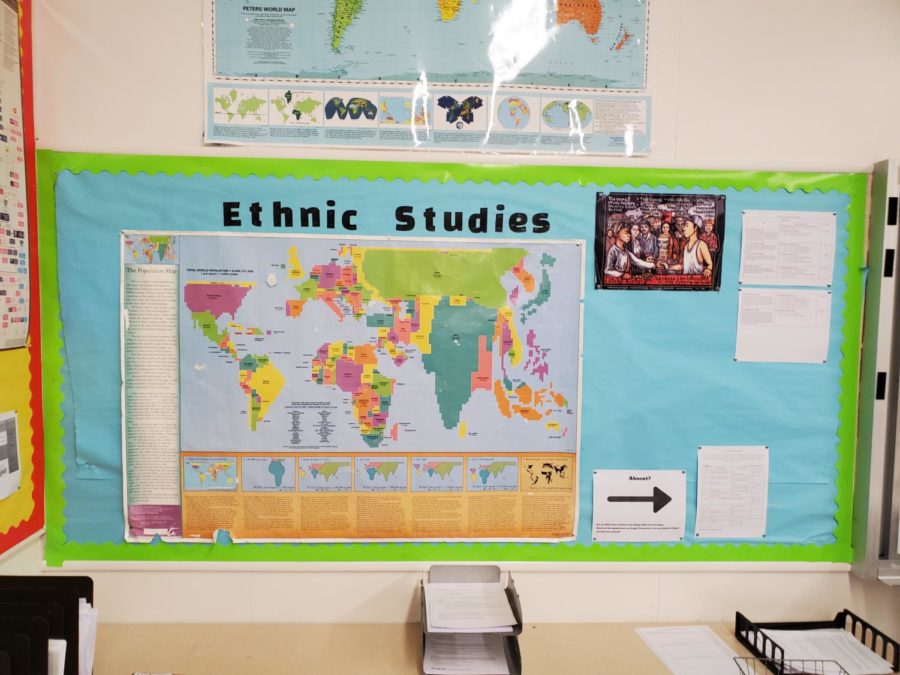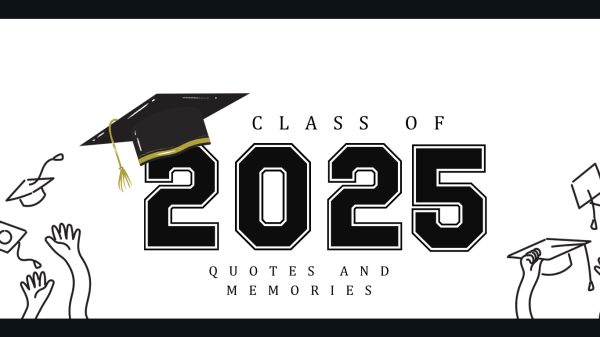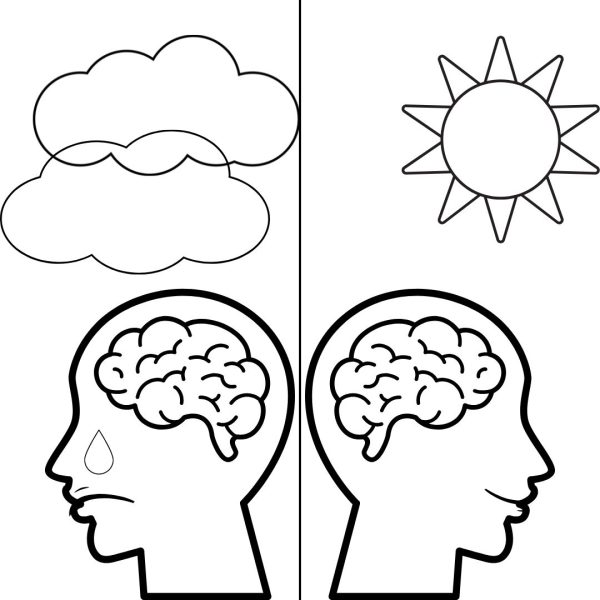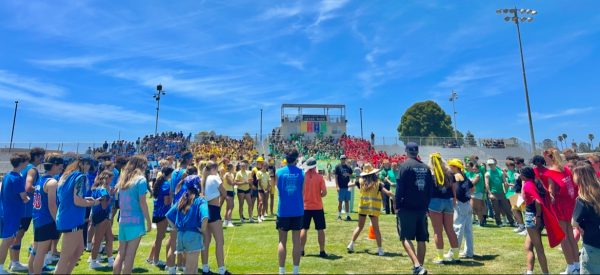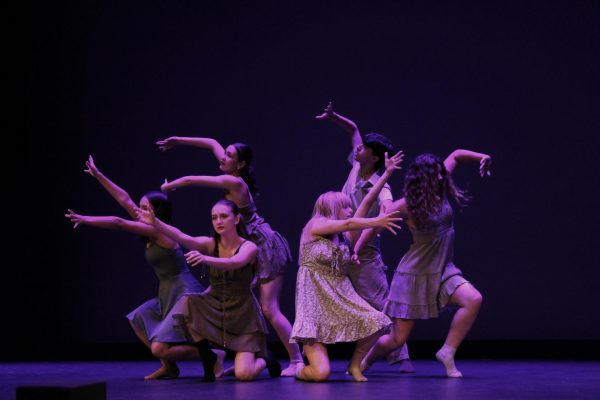New Graduation Requirement: Ethnic Studies
Prior to Ethnic Studies, a similar Psychology poster was hung here. The Psychology Class spent some of their downtime in the class helping Peters deconstruct the Psych poster and replace it with this Ethnic Studies one.
Kelli Peters is the current teacher for the newly introduced Ethnic Studies semester course. The class has just now begun its first unit, introducing a TED talk called “The Danger of A Single Story.”
The video details the life of Chimamanda Ngozi Adichie, an African woman who grew up in Nigeria. Adichie is an author, who through her experience since a small child of reading and creating books realized the power behind a single story. Adichie stresses the importance of making sure that the single story is rejected and instead, that there be several stories adopted to get a full picture.
That is exactly the purpose of the Ethnic Studies course. American History courses most often follow the trend of a single story, and the Ethnic Studies class serves to widen the stories students hear about any particular event.
“It’s not that the single stories are wrong, they’re often true, they’re just missing pieces,” Peters said.
The class attempts to express stories from as many ethnic and racial groups as possible but the class is still only a semester-long course. The class tackles stories from a Native American, African American, and Latinx perspective as well as Asian American, Jewish American, and other immigration-to-the-United-States related stories.
“The reason we’re starting this class is the state of California, our legislature, passed a bill,” Peters said.
The bill, Assembly Bill 101, requires all California schools to have the Ethnic Studies class as a graduation requirement for high school starting with the class of 2030. The bill also states the Ethnic Studies class must be offered by 2025.
“That’s why we’re starting it now, and just kind of piloting it and figuring it out and then eventually, I think we’ll start broadening it,” Peters said.
So far the class has been getting through the introduction unit. There is a lot to cover about exactly what Ethnic Studies entails, and what it could entail.
“There’s a lot of different ways to [teach the class]. We’re doing that multiple perspectives of history kind of way and talking a little bit about the history of Ethnic Studies,” Peters said.
Even when it comes to history alone, there are many ways to tackle studying the various ethnic and racial groups. A class could focus on the unique perspective of just one non-white ethnic group, or a couple, or many numerous different cultures and perspectives.
“Also: identity and perspective, what our own identity is and how our name ties into that,” Peters said.
In the introductory unit, Peters provided an assignment requiring each student to research their own name and find out where it came from.
“We talked about [how] maybe someone saw your name and had a single story about you or your name,” Peters said. “You have more stories that make you up.”
Of all the teachers to pilot the Ethnic Studies course, Peters is one of the most well-suited for the job. Her Bachelor’s degree is in general American History, but her focus was on African and African American history, perfect for a course like Ethnic Studies.
Many of the students in Peters’s Ethnic Studies class are students who initially took her Intro to Psychology class the semester prior, such as Steve Ortega (‘23).
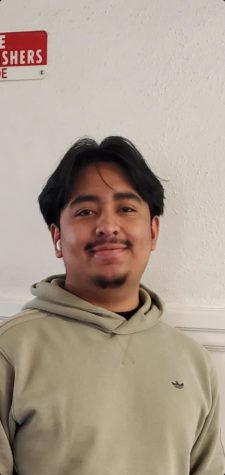
“I want to pursue psychology just to see what’s up and if it’s a career pathway that I would consider in the future, and for Ethnic Studies, well, I just stayed in the class,” Ortega said.
Even if students are not in Ethnic Studies because they wanted to be, that does not mean that it makes the class redundant. No matter how the students got there, the class provides perspective.
“It’s easy, just a little bit more [of a] workload [than Psychology],” Ortega said.
Ortega was most interested in the part of the class regarding protesting and riots of Black Americans and how they would be treated, and how the world can do better.
Another useful insight into the Ethnic Studies course from the student perspective is from Zivah Hartman.

“I really like history in general, so having another [story of a particular aspect of history] is really cool,” Hartman said.
In the Ethnic Studies class, the current focus is on the perspective of Native Americans. More specifically, the treaties made by the Native Americans.
“It’s really interesting because it’s showing the other side of history where white people aren’t the only part of history,” Hartman said.
Although most students know that there were histories other than those of white people, it is not often that other perspectives are thoroughly elaborated upon.
“If you actually look into the percentile that makes up America, less than 50% of the population is white and everything else is like Japanese, Indian, and other ethnic groups,” Hartman said. “There are so many other stories, not just one side or two sides to history.”
The Ethnic Studies course reveals that history is much more complex than what most traditional history classes can cover in only a year.
“[Ethnic Studies] just gives you a lot more thought process into when you look back and see how ‘this happened’ or ‘that happened’ and how it’s not so much of one story, it’s more like a billion stories and it’s really hard to tell them all at once,” Hartman said.
One element of telling perspectives from other cultures than the American perspective is that Americans are often not painted in a great light.
“There were a lot of treaties made when we came into America and just about all of them were broken,” Hartman said.
The treaties were laws and decrees that were made between the Americans and the Native Americans. They were written with sincerity and do not expire. Even today, these treaties are winning land back for the Native Americans who had it wrongfully stolen from them due to intrusions and dishonor towards treaties.
“[Treaties] were not just these things that were written down,” Hartman said.
These treaties spanned from being land related to protection related and they were all broken by the Americans. The Americans would find gold on land or did not respect the Native Americans’ boundaries because of the principles of “Manifest Destiny.”
Hartman initially ended up in the Ethnic Studies class through Psychology in the first semester like Ortega.
“I want to be a therapist and so psychology was something that I could see if that is actually what I want to do and I just really like knowing things about other people,” Hartman said. “I have a really open mind so just having connections of why I act like ‘this’ or why other people might act like ‘this’ gives me a little bit more of that capability.”
In many ways, the importance of diversity in Ethnic Studies also applies to elements of Psychology in the semester prior. Both put forward the idea that it is important to explore different perspectives than one’s own.
“I think [Ethnic Studies] is a good class and for it to be required in a few years is a really good idea because just giving everyone a little bit more knowledge around where they live and why we and how we came to be is like, really important,” Hartman said.

Ethan Weller is a Senior and first-year newspaper student. He enjoys drawing, creative writing, and music. He is also an avid dog lover and quite regrettably...

